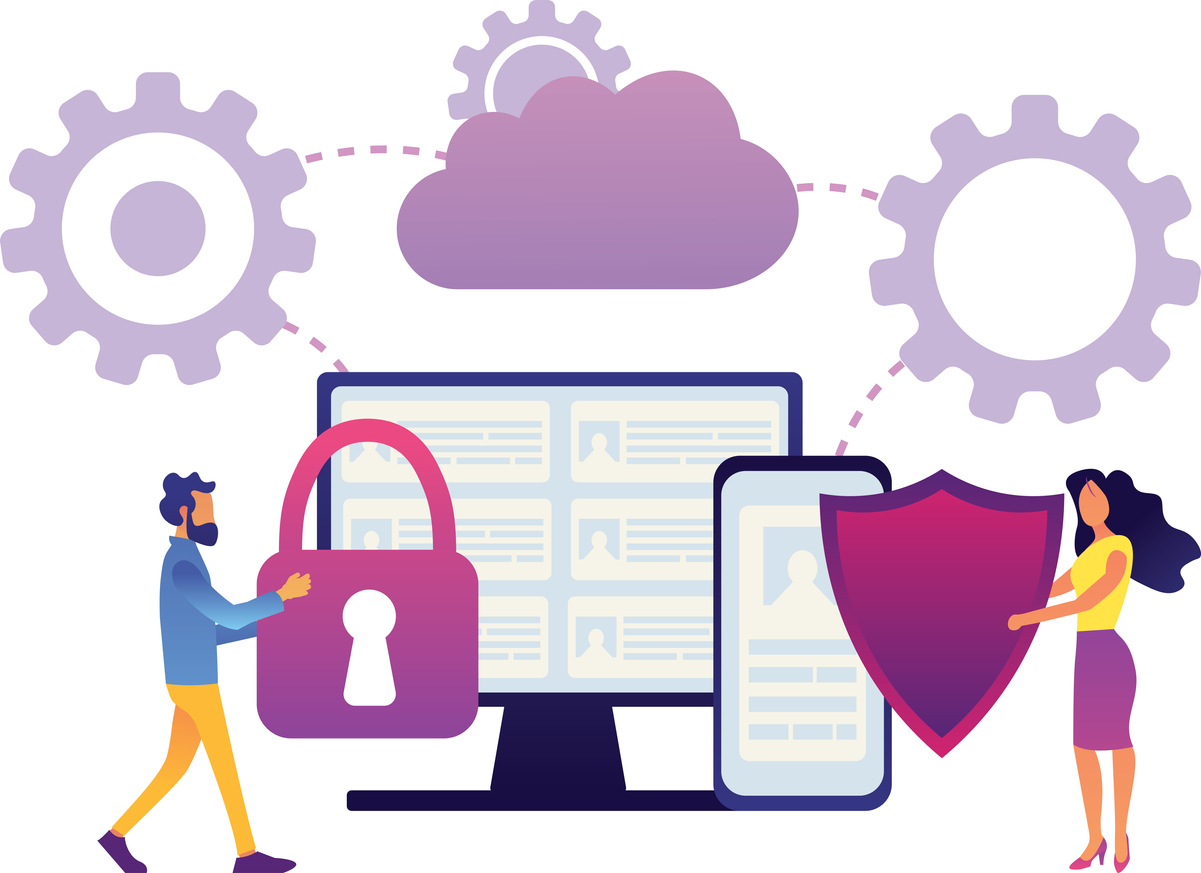Data Privacy Is for Life, Not Just a Day

"*" indicates required fields

Data privacy has become a trending buzzword in the digital world as millions of users and companies look to ensure their valuable information is protected round the clock. Businesses, in particular, are facing a double-edged sword with one tip representing the exponential rise in Cybersecurity threats and the other representing the increased amount of scrutiny from compliance bodies, such as the General Data Protection Regulation (GDPR) and California Consumer Privacy Act (CCPA).
For years, companies had opted for temporary solutions to ensure compliance with regulatory bodies. However, with the surge in security issues and penalties, proper handling of data is becoming a necessity. Simply put, now, data privacy is for life, not just a day.
In this post, we’ll highlight the importance of data security and privacy in the new normal and share how to protect your data privacy from Cybersecurity threats.
Data is a complex concept for digital nomads to understand as it encompasses a wide range of information. Therefore, we’ll be breaking down different types of data and share their importance respectively:
Personally Identifiable Information (PII) typically includes a user’s name, address, email address, date of birth, social security number, contact number, medical status, employment, education, and other similar information.
If this data is compromised via a data breach or stolen through phishing campaigns, it can provide cybercriminals with sufficient information to take out loans in their name or conduct identity theft.
Your online activity, including your website visits and browsing habits, is monitored by an Internet Service Provider (ISP) – which can be easily hacked. When this happens, there isn’t a lot of consumers can do to stop their information from being breached as most websites they visit use tracking cookies.
Although cookies are generally used to personalize internet experiences, they can often go too far when manipulated and allow hackers to access your browsing sessions and history.
Email accounts are among the most go-to places for cybercriminals to carry out their dirty work. As a central hub connecting communications with friends, colleagues, and family, a single compromise can put all your information at high risk of credential stuffing, phishing, social engineering, and even ransomware.
Many fraudsters use social engineering methods to impersonate users and call their service providers to transfer ownership of their numbers. This allows them to take advantage of your number for the time it takes to grab two-factor authentication sent to the owner’s device and access their accounts, such as emails, banking, or even crypto wallets.
Online transactions contain user credentials for popular financial services, such as Stripe, PayPal, or credit/debit card information. In many cases, passwords and 2FA aren’t enough to protect users on vulnerable e-commerce sites, as hackers inject code into the portals to steal data input and conduct Man-in-The-Middle (MiTM) attacks. Some even use card-skimming hardware to steal user information.
As mentioned above, companies that handle customer data are under immense scrutiny following the arrival of new regulations, especially the EU’s GDPR. With several other bodies designed to level the playing field for security measures, companies now have to properly encrypt user information as part of their routine security processes.
The purpose of this is to make consumer data unreadable to unauthorized parties. While there are several ways to do this, many companies use SSL and TLS certificates that support encryption on websites, such as Let’s Encrypt. This helps webmasters improve privacy and security even though it is also being adopted by fraudsters.
To limit SSL vulnerability, many companies, including Mozilla, Google, and Apple, have prompted TLS certificate lifespans to drastically reduce (up to a year at max), forcing companies to update every year for long-term protection.
End-to-end encryption has also become incredibly popular since the start of the pandemic. This innovative form of encryption prevents unauthorized users from accessing or reading the content of messages, including the vendors themselves.
Here are some other ways to protect data privacy:
DLP is a set of tools and strategies that allow security teams to prevent consumer data from being lost, misused, accessed by unauthorized personnel, stolen, or accidentally deleted. It is essentially a Cybersecurity solution that detects and prevents data breaches.
Modern companies are equipping their IT infrastructures with sophisticated storage equipment that provides built-in disk clustering and redundancy.
Creating copies of user data has become a crucial practice for businesses to ensure data availability in case of loss or modification. For data-driven organizations, it is among the main keys to business continuity and compliance.
Many companies employ replication along with backup – a technique for copying data continuously to another location to provide up-to-date information at all times.
Data erasure is a smart strategy used by businesses to limit liability by deleting irrelevant or useless customer data. The process is typically carried out after data extraction and authentication to ensure compliance with regulatory bodies, such as GDPR.
Disaster recovery refers to a set of technologies and contingencies used by companies in the event of a disaster, such as a fire, flood, earthquake, or cyber attack. The process is similar to backup but instead of storing copies on-premises it does so on remote sites or in the cloud.
And there you have it – how to protect data your data privacy from Cybersecurity. Hopefully, with this information, you’re on the right track to ensuring your user information is protected at all times from fraudsters and unfortunate events. Data integrity has become crucial for organizations of all shapes and sizes in the new normal where it’s always open season for cybercriminals.
For more Cybersecurity tips and services, visit Percento Technologies today.
www.percento.us/expert-services/managed-it-services/cybersecurity